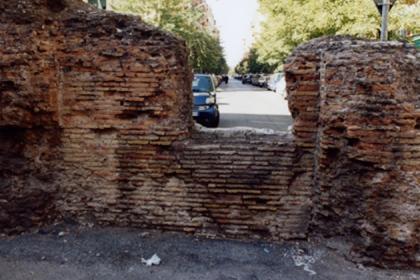
The remains of the structure are located on the hill of Monte Mario, flanked by the modern via Trionfale which follows the route of the ancient Via Triumphalis, a road known since the 2nd century AD, which connected the territory of Rome to that of Veii, and whose name seems to derive from the route traditionally followed by triumphal processions on the occasion of the return of the victorious armies to Rome.
The cistern was discovered in 1957 during the park arrangement of the open space between via Evangelisti and via Cadlolo: it consisted of a circular basin (diam. 6.90) only half preserved, paved in opus spicatum with fragments of cocciopesto to waterproof the surface; the structure was delimited by a wall in opus caementicium (0.25 x 0.60 m), connected to the level of the basin by a cocciopesto kerb. A passageway connected the basin to a rectangular room with a curved back wall, covered in hydraulic plaster, identifiable as a water distribution tank.
It is assumed that the cistern supplied a Roman villa, probably owned by the Gens Minucia, perhaps located on the site currently occupied by the church of the Madonna del Rosario, or on that of Villa Mellini.
Photo credits: courtesy of Capitoline Superintendency
Sette Sale - Seven Halls

 Condividi
Condividi
Piazza Ronchi Cistern

 Condividi
Condividi
Roman cistern of via Cristoforo Colombo

 Condividi
Condividi
Informationen
Visible from the outside
 Condividi
Condividi
Location
Um mehr über alle barrierefreien Dienste zu erfahren, besuchen Sie den Abschnitt barrierefreies Rom.











































